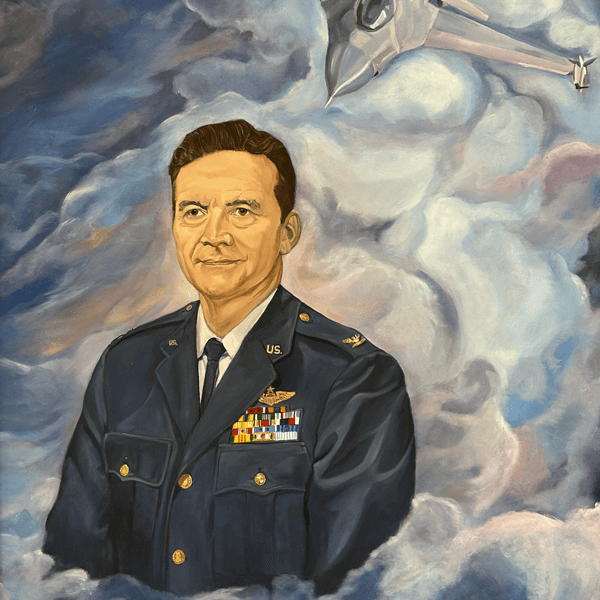The Fighter Pilot’s Secret to Winning at Life
How the OODA Loop Can Defeat Indecision
The OODA Loop is a dynamic decision-making framework developed by U.S. Air Force Colonel John Boyd, encompassing four sequential stages: Observe, Orient, Decide, and Act. Initially created to enhance military strategy, particularly during air combat, the OODA Loop has gained recognition for its applicability in various high-stakes environments, including business and personal productivity.
By promoting rapid and informed decision-making, the OODA Loop allows individuals and organizations to maintain a competitive edge in fast-paced and unpredictable situations.
Notably, the OODA Loop emphasizes the importance of situational awareness and adaptability. In its Observe phase, decision-makers gather comprehensive information about their environment, while the Orient phase involves interpreting this data to construct a mental model of the situation. The Decide phase evaluates potential courses of action, ultimately leading to the Act phase, where plans are executed and results assessed.
This iterative process not only enhances agility and responsiveness but also encourages continuous improvement through feedback loops that inform future decisions.
Despite its benefits, the OODA Loop is not without critiques. One prominent concern is the potential for analysis paralysis, where the abundance of information can overwhelm decision-makers, leading to indecision rather than timely action. Additionally, cognitive biases and varying levels of knowledge among decision-makers can hinder effective use of the framework, particularly in stable environments where rapid adaptability may be less crucial.
These limitations highlight the need for awareness and structured approaches when implementing the OODA Loop in practice. Overall, the OODA Loop stands out as a versatile and powerful tool for decision-making across diverse fields, fostering a culture of agility and continuous learning while navigating the complexities of competition and uncertainty in today’s world.
The OODA Loop Explained
The OODA Loop is a decision-making framework that consists of four essential stages: Observe, Orient, Decide, and Act. Developed by U.S. Air Force Colonel John Boyd, this iterative process is designed to help individuals and organizations make effective decisions in dynamic and competitive environments, particularly where rapid change is a factor.
The Four Phases of the OODA Loop
Observe
The first phase, Observe, involves actively gathering information about the current situation. This goes beyond mere visual observation; it encompasses a comprehensive understanding of the environment, including one’s own position, the competitor’s actions, and broader market trends. In this phase, data is collected from various dimensions—physical, mental, and moral—to form a holistic picture of the circumstances at hand.
Orient
The second phase, Orient, focuses on processing and making sense of the observations collected. This stage is crucial as it helps individuals and organizations construct a mental model of the situation. The Orient phase is influenced by cultural traditions and personal biases, requiring a high level of situational awareness to guide the decision-making process effectively. This phase often involves reflecting on past experiences, identifying potential biases, and understanding how those factors can affect the subsequent decision.
We don’t see things as they are, we see them as we are.
Anaïs Nin
Decide
In the Decide phase, potential courses of action are evaluated based on insights gained during the Orient stage. This step is critical as it establishes a roadmap for what should be done next. Decision-making here involves choosing a strategic path that aligns with overall objectives and considers the implications of each alternative. This stage can include collaborative discussions or meetings aimed at reaching a consensus on the best course of action.
Act
The final phase, Act, translates decisions into tangible actions. This stage is where plans are executed and their effectiveness is assessed. Actions taken during this phase directly impact the operational landscape, either maintaining or altering the current status quo. Feedback from the Act stage provides new data that feeds back into the Observe phase, thus perpetuating the OODA Loop cycle.
For instance, in a business context, this could involve deploying resources, implementing new strategies, or responding to unforeseen challenges.
In any moment of decision, the best thing you can do is the right thing, the next best thing is the wrong thing, and the worst thing you can do is nothing.
Theodore Roosevelt
The OODA Loop in Action
The OODA Loop, an acronym for Observe, Orient, Decide, and Act, serves as a powerful decision-making framework that has been effectively applied in various high-stakes environments, particularly in military operations and business strategy. Developed by U.S. Air Force Colonel John Boyd, the OODA Loop emphasizes the importance of rapid and informed decision-making in dynamic situations, allowing individuals and organizations to maintain a competitive edge over their opponents.
Military Applications
In the realm of military strategy, the OODA Loop has proven indispensable. During air combat scenarios, such as those experienced by U.S. pilots in the Vietnam War, rapid cycling through the OODA Loop allowed pilots to outmaneuver and outpace enemy forces, creating opportunities to exploit their adversaries’ mistakes.
Modern military operations leverage real-time data, advanced sensors, and artificial intelligence to enhance the Observe and Orient phases, enabling quicker reactions to emerging threats in complex environments. The iterative nature of the OODA Loop provides a strategic framework for addressing the fast-paced demands of network-centric warfare and cyber defense, where timely decision-making is crucial.
Business Applications
The OODA Loop’s relevance extends well beyond military contexts; it has become a valuable tool in the business world as well. Business leaders, including Jamie Dimon of JPMorgan Chase, utilize the OODA Loop to evaluate scenarios and make strategic decisions under pressure.
Companies that adopt the OODA Loop framework can effectively analyze market trends and competitive dynamics, thereby enhancing their agility and responsiveness to changing circumstances. By focusing on continuous observation and orientation, organizations can
Keep reading with a 7-day free trial
Subscribe to Philosopheasy to keep reading this post and get 7 days of free access to the full post archives.



